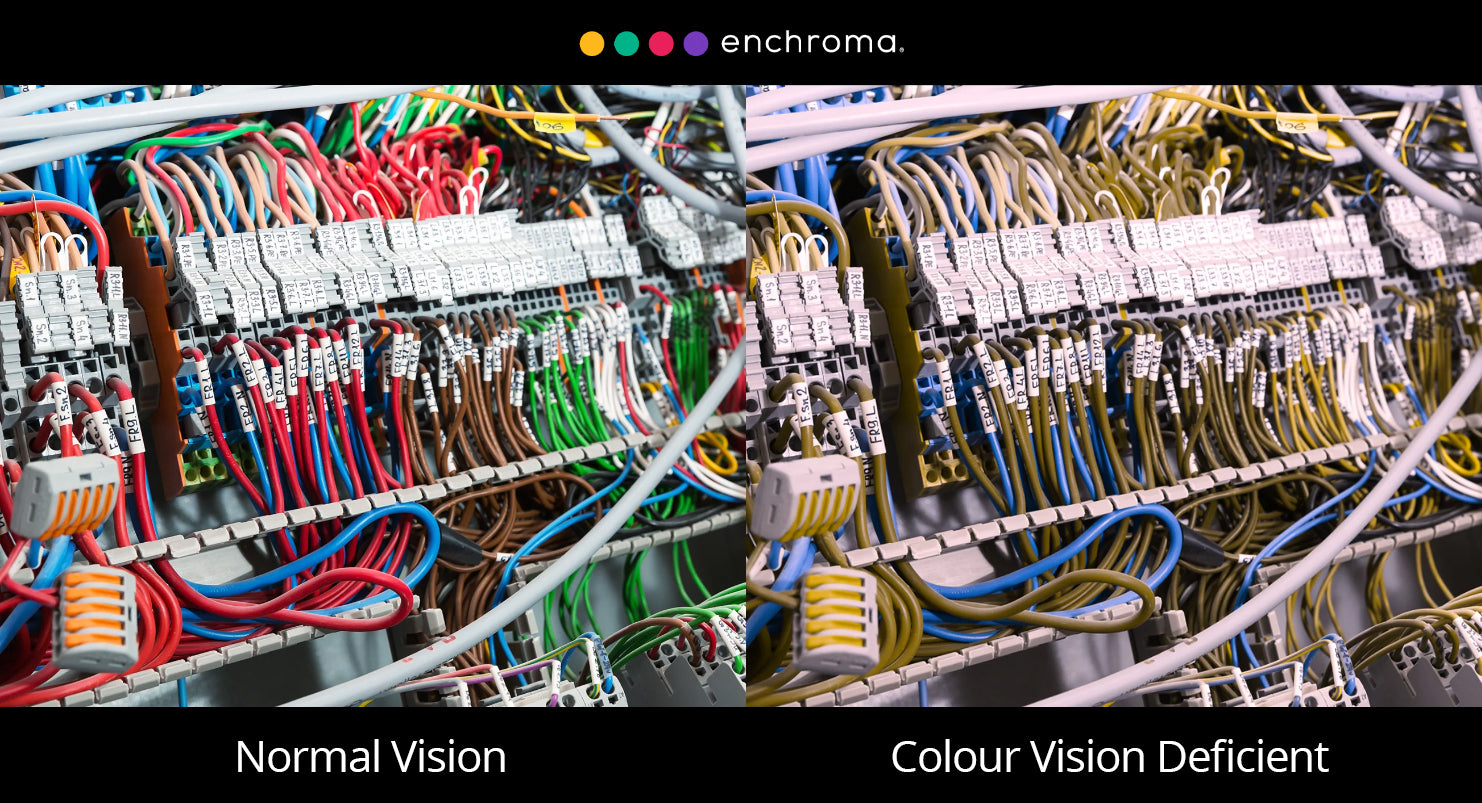A groundbreaking study spotlights the unique challenges faced by those with various types of colourblindness in the workplace. The study by EnChroma unearthed compelling findings that shed light on the daily frustrations and obstacles encountered by those with colour vision deficiency (CVD) across various sectors of the workforce.
One in 12 men and 1 in 200 women globally are affected by various types of colourblindness – approximately 350 million people worldwide. Unfortunately, too often the condition isn’t part of discussions about workplace accessibility and inclusion. Moreover, some people may have never taken a colour vision test and therefore don’t realize why certain colours are hard to identify or cause them confusion. However, the EnChroma study, which garnered responses from 810 colour blind individuals, aims to change that narrative by illustrating the critical role colour identification can play in job performance and safety.
“I work in the nuclear power industry where colour has many important roles, from safety signage and red/green indicator lights to being able to differentiate between coloured wires, and I've always had to have someone check my work,” said Zachary Rowland, a red green colourblind maintenance supervisor for a nuclear power plant and a National Guardsman. His reliance on coworkers to verify his work underscores the practical implications of CVD in certain environments. Click here to read workplace experiences shared by colour blind study respondents.

Key Findings
A More Inclusive Workplace: Recommendations for Employers
Recognizing the prevalence and impact of colour blindness, EnChroma calls for employers to take proactive steps to create a more inclusive and accommodating work environment. The suggested measures include encouraging employers to implement simple guidelines to adapt work materials and workplace environments to accommodate all types of colourblindness, but to do in particular for staff who are red green colourblind (the most common type), such as:
- Avoid using colours containing red or green in presentations, spreadsheets, graphs, safety signage, operational controls, instructional and other materials. This simple adjustment can significantly reduce the daily hurdles faced by red green colourblind employees.
- Educate managers, creative teams and staff about the prevalence of colour blindness and its effects to foster a more supportive and understanding workplace culture.
- Label or add patterns to colours used in workplace materials to facilitate the ability of colour blind staff to correctly identify colour-coded information.
- Consider making reasonable workplace accommodation assistive aids available to red green colourblind employees, like EnChroma glasses for colour blindness, which can potentially help to reduce colour confusion and frustration for those with red-green colour blindness.
- Since some people don’t know if they’re colour blind, encourage employees to take EnChroma’s free online colour vision test, which takes less than two minutes to complete.
EnChroma's Vision for the Future
EnChroma's study not only brings to light the struggles of colour blind individuals in the workplace but also underscores the company's commitment to fostering colour accessibility. As we move towards a more inclusive future, the insights from EnChroma's study serve as a crucial step in acknowledging and addressing the unique challenges faced by the colour blind community in the workplace. The effectiveness of EnChroma's patented lens technology for colour blindness has been supported by independent scientific research, offering hope for millions striving to experience a more vibrant and navigable world, at work and at play. Take our free colour vision test to learn if you’re colour blind or not.



